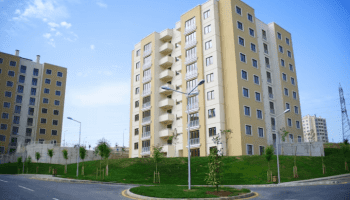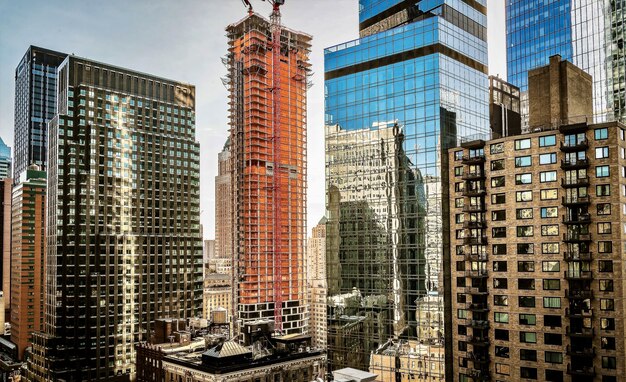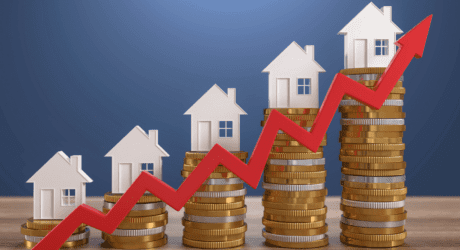One of the recent interesting developments in the commercial real estate market has been the popularity of earnest money. In fact, knowing how much is earnest money for commercial property in the US is now a common part of due diligence research.
We expect that earnest money will become even more important in 2024 and that investors will need a consistent source of earnest money financing to be able to buy the commercial real estate of their choice.
This expectation is due to the fact that sellers find earnest money requirements to be a good way. It isolates serious potential buyers from those who are just sniffing around.
On the other hand, buyers themselves are using it as a way to gain a competitive advantage. Many of them are now prepared to offer higher rates than others. And this can even lead to higher rates for earnest money in 2024.
But this is only one of the trends we are expecting in 2024. Below are some of the others:
Tighter Credit Market
The current cost of living crisis is part of the hangover from the aftermath of COVID-19. As part of measures to fight inflation, the Fed increased interest rates 11 times between March 2022 and July 2023, according to Investopedia. The latest rate increase came in November.
Consequently, commercial mortgage rates “have exceeded 7% so far through 2023, nearly double the 3.8% rate at the beginning of 2022,” according to research by Deloitte reported by Wall Street Journal.
Around 50% and 49% of those surveyed by Deloitte expect the cost of capital and availability to worsen respectively.
Though the potential for further rate hikes has diminished, according to JPMorgan, the Fed likely will not be too influenced by one move in the numbers—it wants to observe clear and vivid trends that are established prior to changing course.
In summary, the tighter credit market expected by respondents to the Deloitte survey will likely hold for early 2024. US News is even more pessimistic: The borrowing cost has elevated drastically. And it will persist with the high indefinitely.
Office Vacancy Rates May Climb Higher
The office utilization rate is just 50% of the pre-pandemic level, according to US News (quoted above). They attribute this to the rise of the work-from-home model. Furthermore, many who have embraced it refuse to return to office.
The trend towards remote work will not slow down, and executives themselves know it, according to Harvard Business Review.
The consequence is that we can “expect U.S. office space to continue to be underutilized unless and until that dynamic changes,” according to US News. This means higher vacancy rates and lower property values.
JPMorgan agrees that “some older, less-desirable Class B and C offices may face obsolescence. However, they believe that this will present chances to change the central business districts’ office space into the data centers.
Continued Growth In Multifamily Properties

Multifamily properties performed well in 2023 with low vacancy rates.
What were the reasons for this growth?
“The limited supply of single-family homes, coupled with urban migration and rising interest rates, creates a favorable backdrop for the multifamily market,” according to TR Capital Partners, a real estate investment company.”
US News also agrees with this analysis, identifying multifamily as one of the few CRE classes enjoying rapid growth.
What does 2024 hold?
“This confluence of factors isn’t a fleeting trend but a strategic alignment propelling robust growth, expected to persist steadily into 2024,” said TR Capital Partners. GlobeST, a commercial real estate resource, also expects both demand and supply to keep increasing in 2024.
Related: A Quick Guide To The Baltimore Real Estate Market
The Real Estate Markets: Present Trends
Let us look at the present trends thats are tracking the real estate markets. The residential real estate markets in the USA have been slowly picking up from the ravages caused by the pandemic. According to the figures, it is estimated that the real estate market value is supposed to reach a figure of USD 2.80 Trillion by the year 2028. The positive news is that it is going at a decent pace (if not healthy enough) at a CAGR of around 2.04% during the forecasting period.
Retrospecting on the days of the COVID-19 pandemic ravages, one can understand that the sector, like any other in the USA, was largely hit by the COVID-19 pandemic. At the beginning of 2021, around 60% of the properties were sold above the advertisement price. Things further deteriorated back then. But slowly, with time, things developed for the better, and again, one saw the steady rise of the sector.
The Boom In Industrial Properties Likely To Continue
Industrial properties are likely to also go the way of multifamily CRE.
Recent growth has been driven by “strong consumer spending, competition in e-commerce and “nearshoring” – relocating operations closer to home,” according to US News. And they expect this trend to continue, given that the nearshoring process is still in its infancy.
However, JPMorgan notes that industrial property growth is already moderating and showing signs of softening. Nevertheless, they still affirm that the long-term prospect is positive, with annual rent growth projected at 5-6% for the next 10 years.
Many more trends could be highlighted, but these five seem fundamental, especially from the point of view of investors who are seeking to maximize their ROI.
Read Also:




























